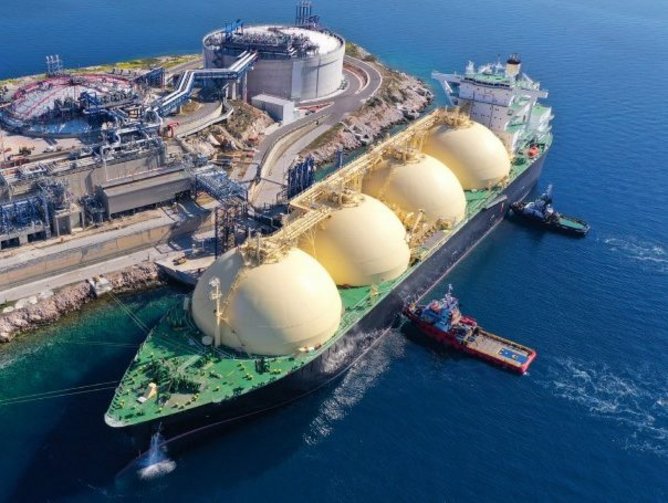
The Energy Transitions Commission has published its Building energy security through accelerated energy transition report.
While its primary focus is on the medium-term strategies required to build zero carbon economies across the world, limiting climate change as close as possible to 1.5°C, the immediate crisis makes it imperative to improve European energy security and to manage the impact of high gas, electricity, and fuel prices on consumers and businesses in Europe and across the world. Worryingly, it finds most countries are currently "far behind the pace of renewables build needed to meet, let alone exceed, 2030 targets".
Here are the top 10 actions required to reduce fossil fuel demand.
10: Increase European oil and gas
The first two advisories appear at odds with broader fossil fuel reduction but the ETC believes there is "some potential to increase gas production from existing Norwegian, UK and other European gas fields which typically have much lower methane leakage rates". Any commitments to increase gas production should be combined with reinforced action to develop CCUS.
09: Switch from gas to coal
Amidst high gas prices a short-term increase in the utilisation of higher-carbon coal plants in Europe is likely, though the long-term trend is a phase-out of these plants in Europe, notes the ETC. Though in the near-term there are clear energy security benefits – given the ability to source coal from a more diverse range of sources – it acknowledges a direct trade-off in terms of carbon emissions.
08: Build LNG infrastructure
LNG imports into Europe could certainly be increased by around 20bcm (200 TWh) without new infrastructure investment and at the global level indeed, increased LNG infrastructure, together with increased gas production capacity in exporting countries, would mean an increase in the total scale of global gas capacity, since Russian production assets would still be in place and seeking alternative markets.
However commitment to large-scale new LNG infrastructure must be combined with strong action – in particular by the US – to deliver the methane leak reductions agreed at COP26 via the Global Methane Pledge. Some contracts are already reflecting this need.
07: Increase sustainable bioenergy
Bioenergy applications – including biomass based power generation and the production and use of biofuels and biomethane – currently account for around 11% of European energy supply.
Strong policies to increase the use of municipal waste and of agricultural and forest residues could however make a contribution to reduced gas and coal demand within five years.
06: Resilient minerals and metals supplies
Transition to a deeply electrified zero carbon economy will in any case drive rapid increases in demand for key metals and minerals – such as copper, cobalt, lithium, nickel and manganese – as well as for rare earths, and if investment in mining capacity does not grow adequately ahead of demand, major price spikes could undermine the transition.
The ETC will deliver a detailed report on mineral and other resources required for the energy transition in the autumn.
05: Accelerate energy efficiency improvements
Energy efficiency improvement – in particular in residential heat applications – has long been identified as a key priority, but one where many countries have made slow progress.
But two years of "forceful policies" could significantly accelerate the pace of investment, making a significant difference to gas demand within five years with estimates suggesting that a further 13bcm (125TWh) from energy efficiency measures can be obtained, in addition to the measures outlined in Fit for 55, by 2025.
04: Extend nuclear plants lives
Even after the planned German closures at the end of 2022 European nuclear plants will be generating 800TWh per annum, avoiding the need for 1600TWh per annum of gas (165bcm).
Recent experiences illustrate that nuclear plants may be kept going significantly longer than originally anticipated - potentially in some cases up to an additional 40 years.
03: Accelerate investment in green hydrogen
Increased European gas prices have dramatically increased the cost of producing grey or blue hydrogen, making green hydrogen in some cases already cost-competitive, much earlier than until recently anticipated. Accelerated development of green hydrogen produced from dedicated renewables should therefore be a priority.
02: Storage and flexibility options
Accelerated growth in the share of electricity coming from intermittent sources will hasten the need to develop storage, flexible demand, and flexible generating capacity to balance power supply and demand across hours, days and months.
Markets for auxiliary services should also be used to drive a rapid development of battery, hydrogen, pumped and other grid storage technologies, and increased interconnection between European grids should also be a priority, with significant improvements possible before 2030.
01: Accelerate renewable electricity roll out
The EU believes faster renewable electricity deployment could deliver a reduction of 170bcm of gas demand by 2030 (equivalent to 850TWh of electricity), but this would require 480GW of wind and 420GW of solar, plus major investments in transmission, distribution and storage.
For solar this would require a continuation of current installation rates which have grown rapidly over the last few years (from 4GW in 2016, to 26GW in 2021), and for wind it would require a very significant acceleration.
In principle this acceleration could be achieved, and commitment to achieve it would bring down costs via scale economy and supply chain development effects. But it will only be achieved with very strong policy action to overcome deployment barriers, particularly relating to the pace of planning and permitting decisions.
The recent UK Government commitment to reduce offshore wind planning and permitting timescales from four years to one year reflects this priority.